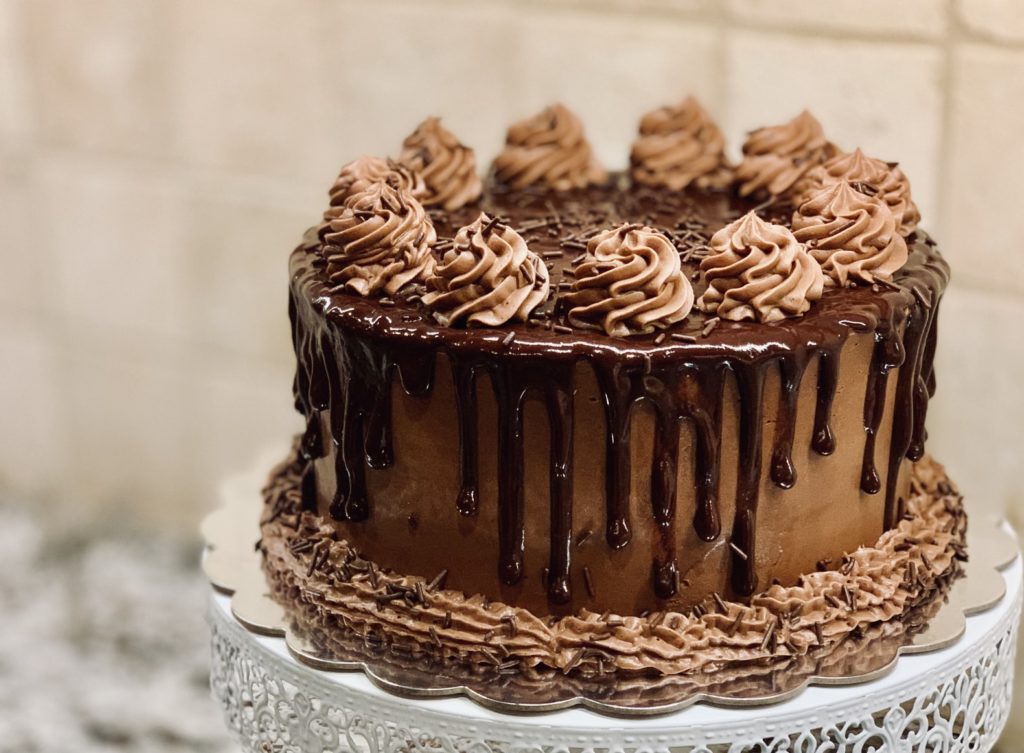Sweet and interesting facts about it …

The feast of all sweet-loving foodies is fast approaching. Already on Thursday, there will be lines to shops and bakeries to celebrate the sweetest day of the carnival, as every year. And good, because as the old folk proverb goes: “Whoever does not eat a donut on a fat Thursday, will not be lucky”.
Before you devour the mountain to reality enchantment, check out some interesting facts about this sweet day and its wonderful heroes – donuts:
What is a donut?
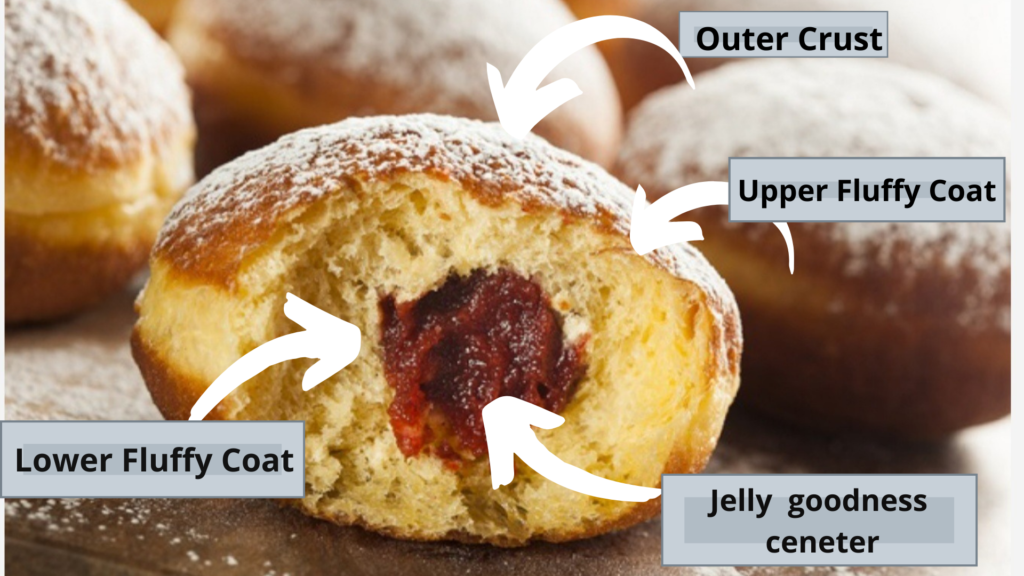
In short, a donut is a mass of yeast dough, deep-fried, stuffed with some deliciousness. It is usually filled with rose marmalade ( the CLASSIC!!), strawberry or raspberry jam, vanilla custard, chocolate, etc… and topped with powdered sugar, icing, chocolate ganache, frosting, and sprinkled with candied orange peel. But you can find so many different versions of this Polish dessert across the country.
Why “fat”?
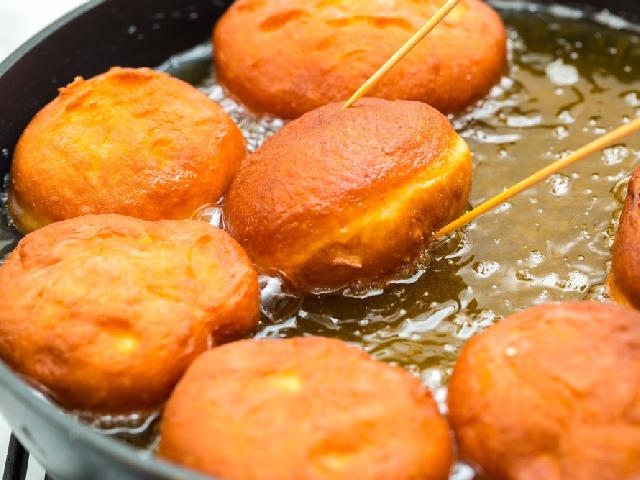
Have you ever wondered why we call this day “fat” and not “sweet” Thursday? The answer should be sought in the distant past, more precisely in the Middle Ages, when donuts were made of bread dough and stuffed with bacon. It was only in the 16th century that people began to eat donuts in a sweet version – with peanuts or almonds inside.
When is Fat Thursday exactly?
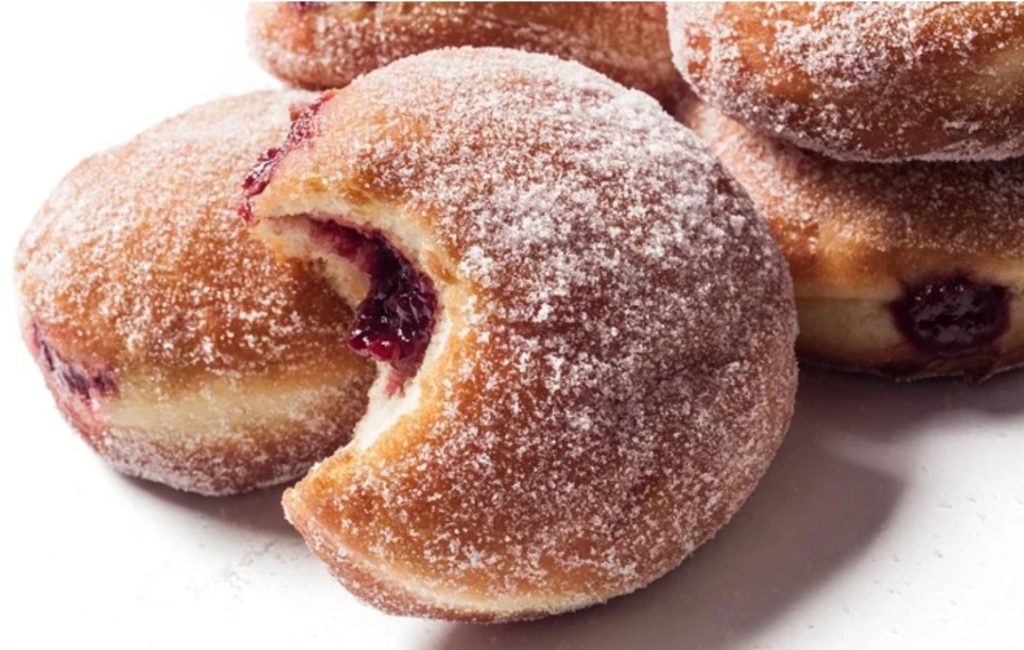
Fat Thursday is the first day of the last week of the carnival. Its date depends on the date of Easter and it can fall between January 30 and March 4. This year we are celebrating Fat Thursday on February 11th which is relatively early.
Fat week…say what?

It was this day that started Fat Week, a period in which everyone could eat their fill. In the past, large amounts of fatty meat, grease foods, and pork fat were allowed. The last days of the carnival were called Shrovetide because they initiated the time of entertainment and full food. During this period, time should have been used to fill their stomachs, before the 40-day fasting period in which every Catholic faithful should abstain.
Fat Thursday in the world

Fat Thursday is not only a Polish tradition. Many nations around the world spend one of the last days of the carnival binge eating, buy about all the different fatty and sweet celebrations you are I will be able to read in next post:
Where do the donuts come from?
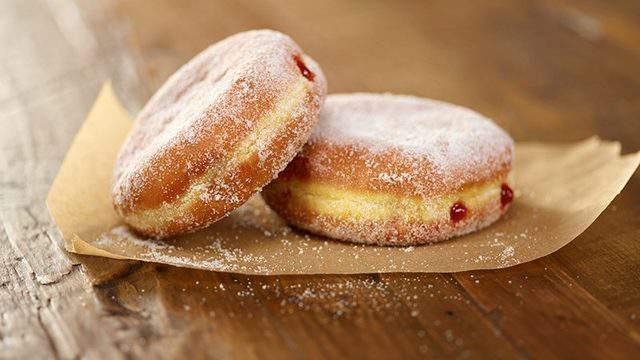
It might seem that donuts are a Polish invention. Unfortunately, we cannot claim this honor. The tradition of frying these delicacies most likely dates back to ancient Rome or, according to other sources, was born in the Middle East
Donuts were known in ancient Rome, they were eaten during the celebration of the winter-spring turn. Initially, the donuts were not prepared sweet, the sweet donut is probably borrowed from Arabic cuisine.
The custom of eating donuts on Fat Thursdays, known as pampuchas, was established in Poland in the 17th century, but rather in cities and at manors. They appeared in the countryside at the end of the 19th and the beginning of the 20th century. Since the date of Fat Thursday depends on the date of Easter, this day is a movable holiday
How many calories does a donut have?
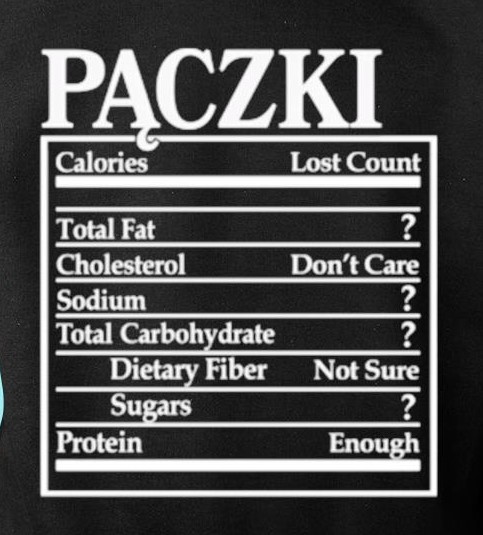
It is commonly believed that the perfect (Polish) donut is fluffy and slightly sunken at the same time, with a light border around it – this is to prove that the dough was fried in fresh fat. The energy value of one typical donut (60 g) is about 244 kcal. The reality is a little different. The actual caloric content of a donut will largely depend on the amount of fat absorbed by the dough. It also depends on the feeling and topping. The large, fresh polish doughnuts, are balloting bombs, reaching in the glory, whooping 800-900 kcal. A piece
How to make donuts Polish way?
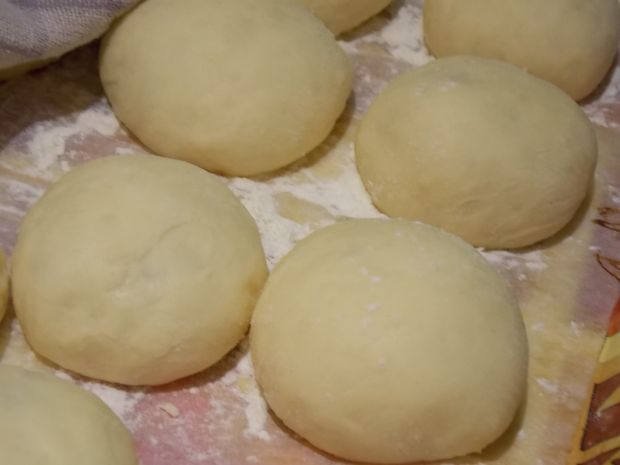
Traditional Polish donuts are made of yeast dough, stuffed with jam, and fried in lard. You must have plenty of patience because the yeasted dough takes its time while rising. Nevertheless, the final product is worth waiting for. Freshly made, still hot and soooo crispy …yummy
*Fat Thursday – good traditional and old-fashioned recipes for donuts
Ingredients:
- 2 lb. ( 1 kilogram) of all-purpose flour
- 15 yolks
- 1 tablespoon of instant yeast
- 1 oz of unsalted butter
- 5 oz (150 milliliters) of heavy whipping cream
- 12 oz (350 milliliters) of milk
- 15 grams of sugar
- 1.5 – 2 oz (50 milliliters) of alcohol ( vodka or rum preferably)
- orange peel (2 tablespoons)
- for sprinkling powdered sugar with vanilla
- filling – jam (the best home-made: rose, cherry, plum, currant; you can mix them all and make your composition)
Preparation:
- Heat the cream and milk, add sugar and yeast. Set aside to rise.
- When they rise, add the flour and egg yolks, and keep kneading until the dough starts to stand out from the hand and bowls (about 30 minutes).
- Add melted butter and knead again until everything is nicely combined.
- Add the spirit and zest. Mix well.
- Set aside covered to rise in a warm place.
- When the dough doubles in size, mix it briefly and set it aside for a while. After this time, we can start forming donuts.
- Set aside, and when they are beautifully grown, fry in hot fat.
- Make an opening ( with pastry syringe), and stuff it with the filling of your choice
- Decorate the top
- enjoy
How many donuts do we eat on a fat Thursday?
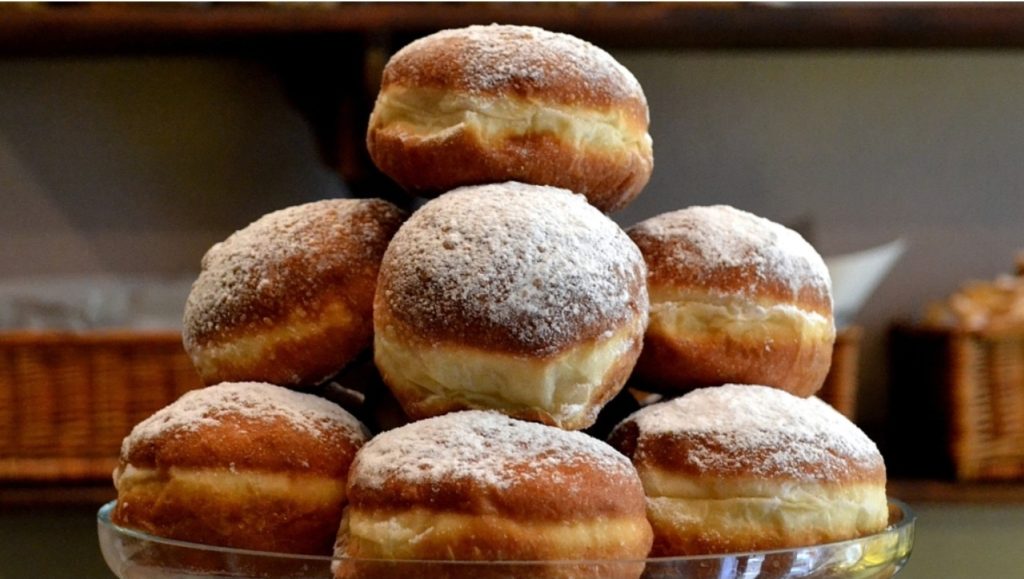
Fat Thursday is a real harvest for all bakers confectioners. Despite the fashion for being fit, on this day we let go of the belt and eat 100 million donuts every year, which is an average of 2.5 and up donuts per Polish person ( including children and babies of all ages )
Do Polish people eat donuts only on this day?
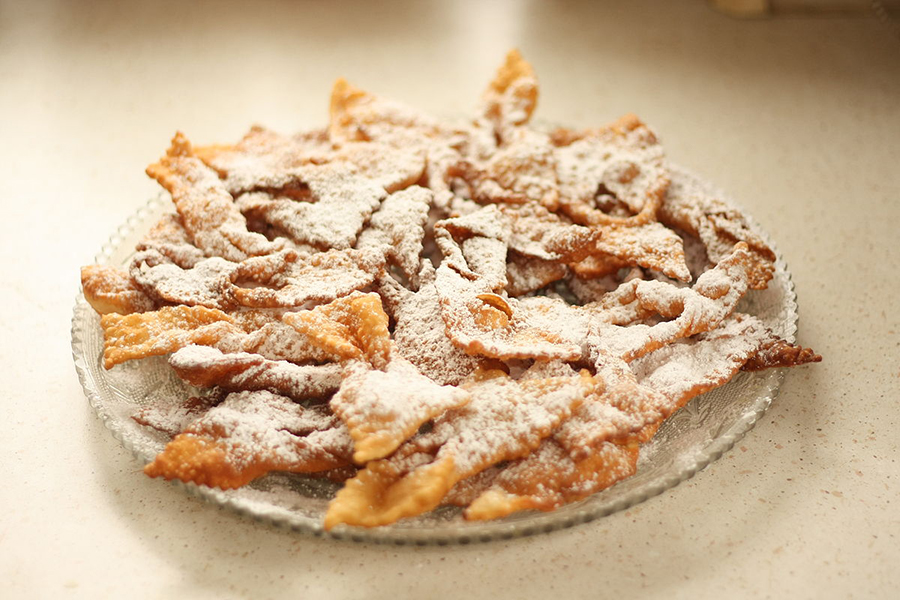
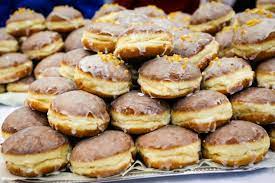
The most consumed food on Fat Thursday is donuts, there is no doubt about that. But another traditional Polish dessert that is immensely popular on this day is the one called Faworki, also known in some places as Chrusty or Faworki ( Angel Wings). Faworki is thin dough ribbons, fried until crispy and sprinkled with powdered sugar.


